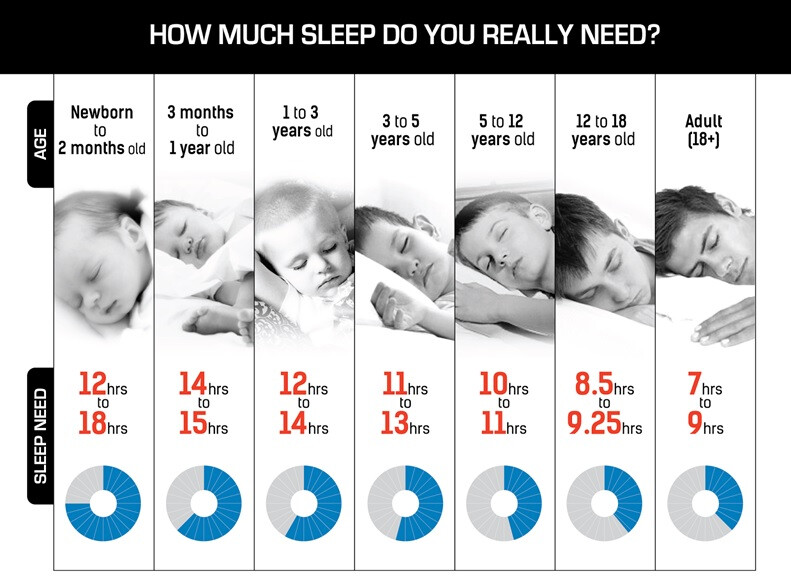
 EXACTLY HOW MUCH SLEEP DO I NEED?
EXACTLY HOW MUCH SLEEP DO I NEED?According to The National Sleep Foundation's guidelines, recommended sleep durations are based on age-specific age ranges. So their answer is that healthy adults require at least 7 1/2 - 8 hours of sleep per night with teens and seniors needing slightly more.
But here's the thing: a good night's sleep doesn't happen in just one 7 or 8 hour stretch. Good sleep is actually about letting the body go through several different phases and cycles three or four times each night.
There are two basic types of sleep: rapid eye movement (REM) and non-REM. Each type of sleep is linked to specific brain waves and neural activity.
THE FOUR CYCLES OF SLEEP
A typical sleep cycle is about 90 minutes long, and it consists of three phases of non-REM and REM sleep. Everyone will cycle through all three stages of non-REM and REM sleep several times during a typical night with increasingly longer, deeper REM periods occurring toward morning.
Stage 1 non-REM sleep is the changeover from wakefulness to sleep. During this short period (lasting several minutes) of relatively light sleep, the heartbeat, breathing, and eye movements slow, and muscles relax with occasional twitches. Brain waves begin to slow from their daytime wakefulness patterns.
Stage 2 non-REM sleep is a period of light sleep before entering deeper sleep. The heartbeat and breathing slow, and muscles relax even further. Body temperature drops and eye movements stop. Brain wave activity slows but is marked by brief bursts of electrical activity. People spend more repeated sleep cycles in stage 2 sleep than in other sleep stages.
Stage 3 non-REM sleep is the period of deep sleep that allows for that refreshed feeling in the morning. It occurs in longer periods during the first half of the night. The heartbeat and breathing slow to their lowest levels during sleep. Muscles are relaxed and it may be difficult to awaken. Brain waves become even slower.
REM sleep first occurs about 90 minutes after falling asleep. The eyes move rapidly from side to side behind closed eyelids. Mixed frequency brain wave activity becomes closer to that seen in wakefulness. Breathing becomes faster and irregular, plus heart rate and blood pressure increase to near waking levels. Most dreaming occurs during REM sleep, although some can also occur in non-REM sleep. There are different levels of sensory disconnection from the environment and the brain temporarily paralyzes muscles, which prevents people from acting out their dreams.
During sleep, a person usually progresses through all of the 3 stages of non-REM sleep before entering REM sleep. This typically happens about 1 to 2 hours after falling asleep.
As people age, they will typically spend less time in REM and more time in non-REM sleep. As infants, about half of the time is spent is each cycle and that slowly changes as they grow.
Ready to find peaceful slumber? Book your sleep breakthrough call and let's talk about how to improve your sleep. Click on the button below.
___________________________________________________________________________________________________
Catherine and Elizabeth have been helping people detox their homes and choose to live green for over ten years. We say detoxification is a process, not a destination. New chemicals are constantly being introduced to the market and keeping them out of our homes is something we all must be very diligent about.













0 Comments